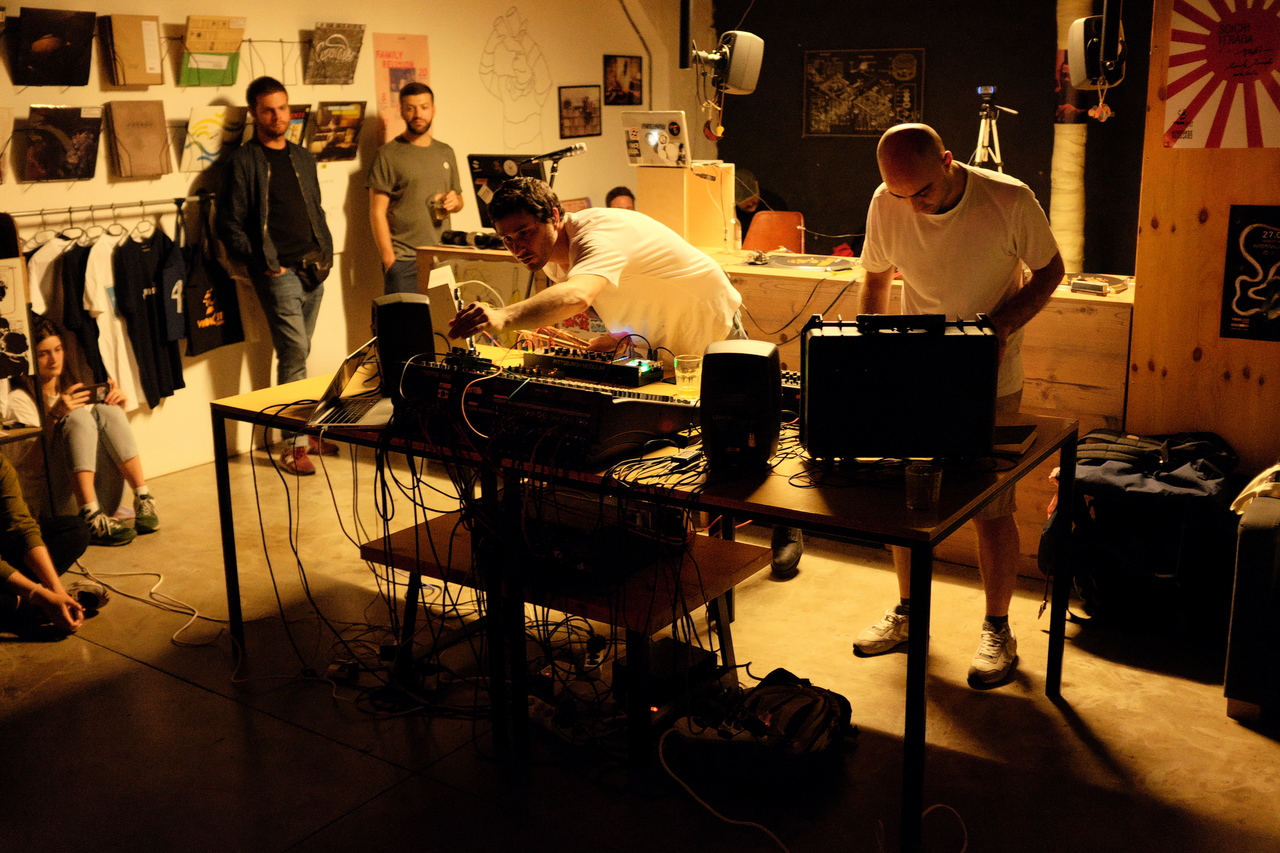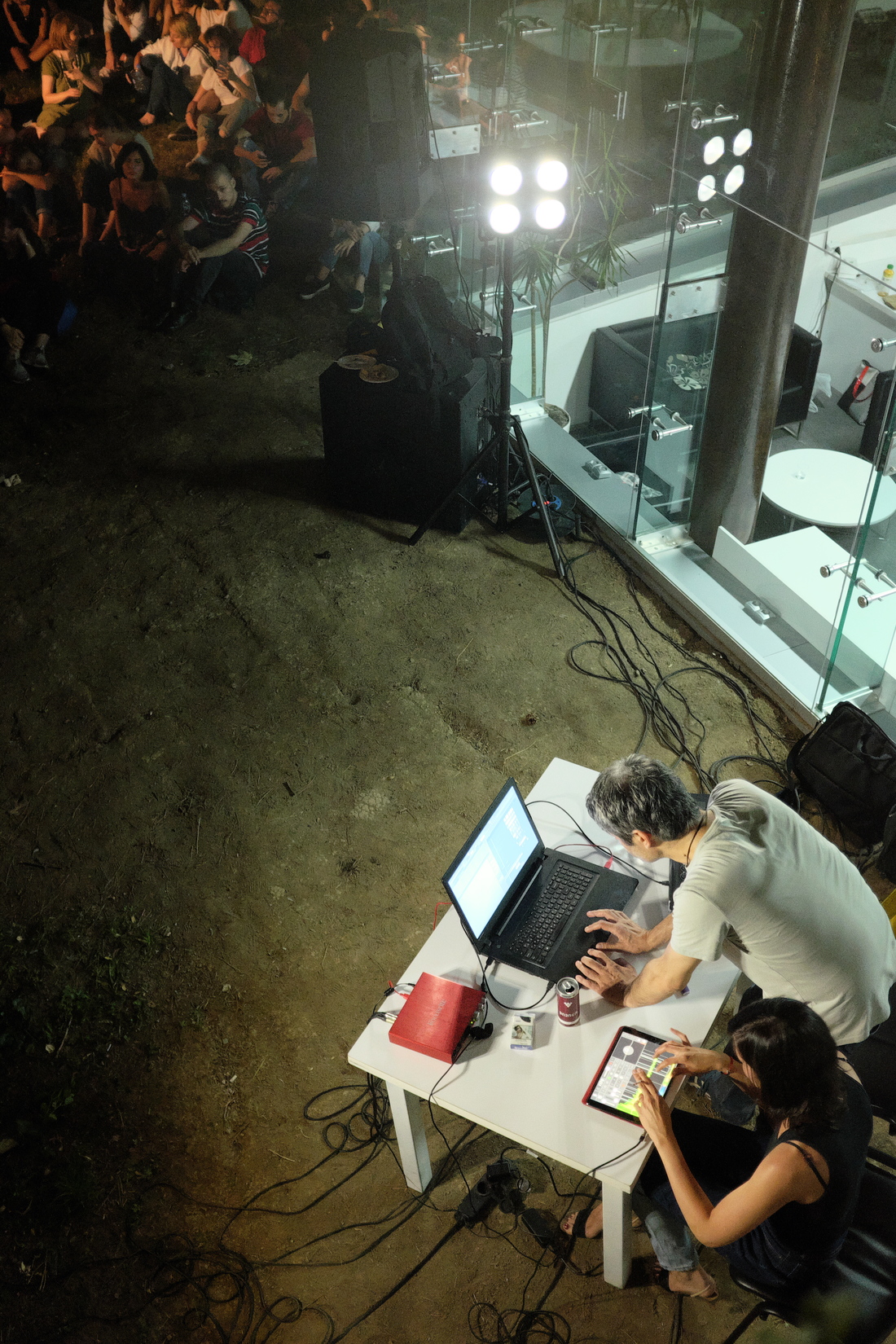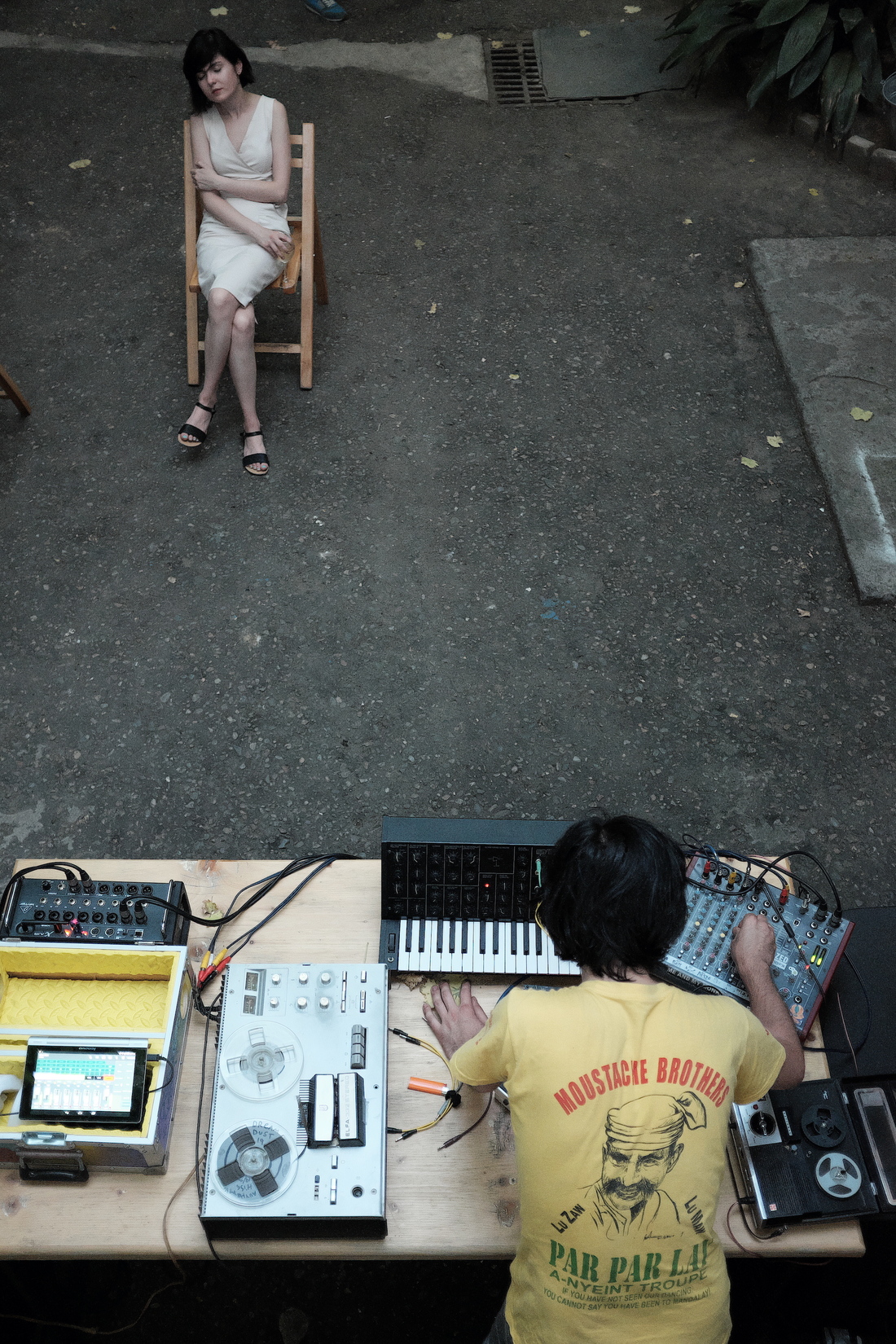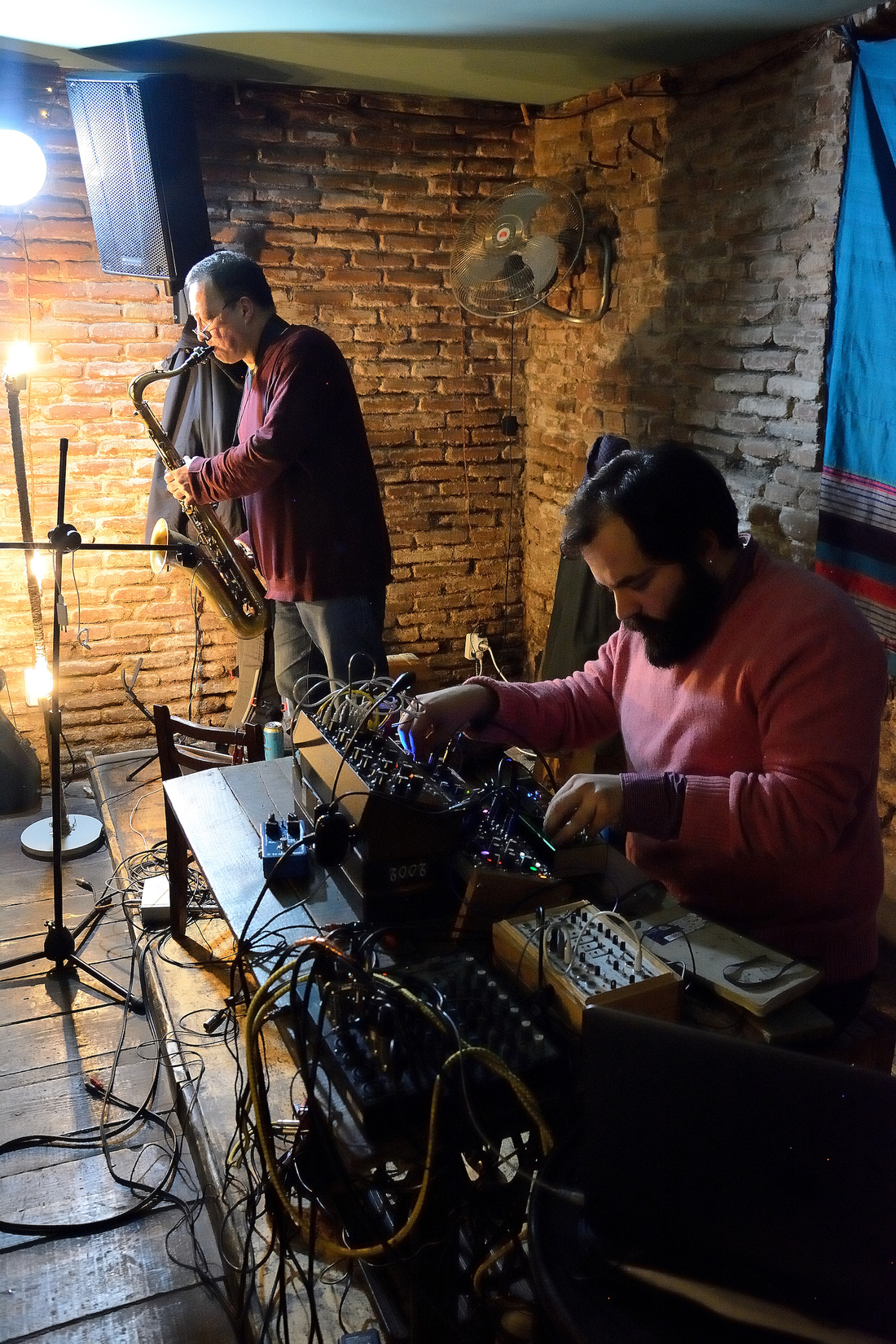Soon Machaidze, Dzodzuashvili and Beridze, who all were part of the Artistic Collective 'Goslab', would often work together and contribute vocals on each other's tracks. In the early '00s they would all release their debut albums on German labels: as Nikakoi, Post Industrial Boys and TBA respectively. Nika recalls that upon hearing his music at a friend's place, the owner of Berlin based WMFRec Records invited him to play in the WMF club. After the gig Machaidze was offered a record deal. While his debut album 'Sestrichka' combined Breakbeats and melancholic melodies, later on he composed film scores, music for theater plays and directed music videos. Beridze's first solo album 'TBA' released on Max Ernst Records featured 21 short tracks with glitchy, percussive noises swirling above and below slowly moving melodies. Alongside releasing 8 more solo albums she wrote several film scores and recently started to collaborate with the Mondrian Ensemble, composing music for acoustic instruments and electronics.
Alongside ten other producers she was also featured on the compilation
'New Georgian Aesthetics - A collection of Georgian Electronic music' released by the label 'Komuna' in 2002. The short-lived label was run by Sergi Gvarjaladze, a musician and Radio/TV producer, who co-founded the Georgian Electronic Music Awards “Electronauts” in 2007. The other release on the label was the album
'Anidan Hoemde' by Nika Tsereteli and Mamuka Berika. While at that time there were several projects like Sameba combining Electronic music with Georgian Folk, Nika's and Mamuka's project combined electronics with folk music and instruments from further afield: the Caucasus, Middle East and India.
By the end of the '00s several new groups like
Me and My Monkey,
Kung Fu Junkie and
Okinawa Lifestyle appeared on the scene, with the first two particularly drawing on both Electronic and Indie music. Their songs had in common the use of vocals, keyboards, drum machines, samplers/computers and electric guitar. Eventually all of the groups disbanded but many of the involved musicians would be prolific solo artists. The founder of Me and My Monkey, Sandro Chinchaladze, performs and records as TeTe Noise. His former band members Gacha Bakradze and Vazha Marr are both active solo producers. The latter noticed that in this decade many musicians started to explore more abstract soundscapes: “When I started the music was much more structured. Guitars and keyboards were used quite a lot. There was often a singer singing about his feelings. I think the music is more abstract now.” You can hear this change in TeTe Noise's music. For instance his epic 2017 album
“Erase Me Form the Clusters” consists of one 45 minutes long lush cosmic trip created with a Mini Moog, synthesizer, drum machine and field recordings. In contrast Sandro's live performances can turn into a violent and abrasive noise storm. Or listen to his minimalistic Drone piece
“Silence Shepherd” from 2014: it consists only of the sounds produced by microphones placed in front of active speakers and the use of a mixer to highlight certain frequencies.
Another good example of this development is the music of
David Datunashvili, who played together with now techno producer and DJ Gigia Jikia (aka HVL) in Okinawa Lifestyle: only two of the 7 catchy and poppy tracks of the Okinawa Lifestyle EP “Underwater” from 2011 barely exceed the 3 minute mark. After releasing his solo album 'Composure' in 2014, he started to play and record with
Irakli Abramishvili, after both discovered their mutual interest in finding new sounds and exploring the experimental direction of music. Using samplers, field recordings, electric guitar and other equipment, their improvised soundscapes draw on noise, ambient and drone music.
Also starting in the late '00s was
Rezo Glonti from Batumi, who eventually relocated to live in Tbilisi in 2009, albeit he spends part of his time out at sea as a sailor. He distinguishes the music he releases under his own name and as Aux Field by comparing the first to a color movie because its more organic feeling and ambient/drone texture is created through the use of both synthetic sounds and field recordings; the second he likens to a black and white movie since it is based on synthetic sounds only with a greater emphasis on rhythmic patterns. His first solo album 'Diary of the Second Officer' evokes the feeling of being on the open sea surrounded by water and sky; Aux Field's pulsating, dense and claustrophobic atmosphere on the other hand reminds Tbilisi's inner city district Saburtalo, where Rezo has been living for some years.
 Photo: Jan Chudozilov
Photo: Jan Chudozilov

 Photo: Jan Chudozilov
Photo: Jan Chudozilov

 Photo: Jan Chudozilov
Photo: Jan Chudozilov





